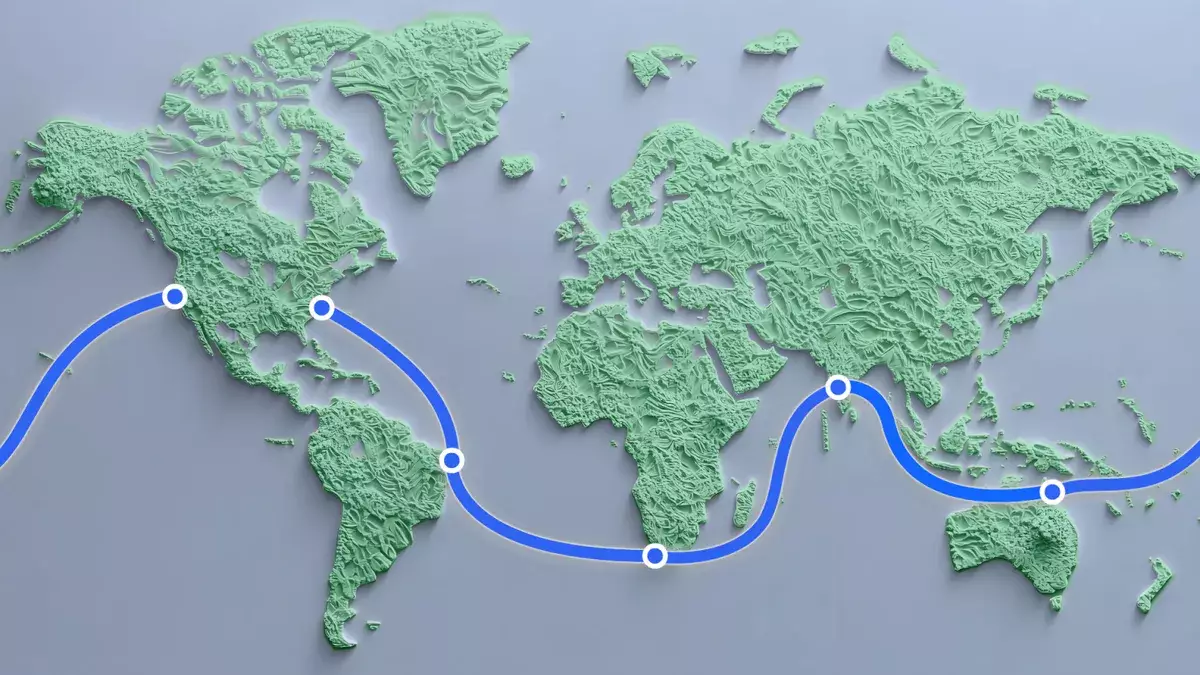As we traverse through 2025, the world finds itself enveloped in a digital landscape dominated by wireless technology. Despite the allure of wireless communication, we are often blind to the extensive and critical infrastructure that remains anchored deep beneath our oceans. Current estimates reveal that a staggering 98% of global internet traffic is relayed through a sprawling network of undersea cables. Against this backdrop, Meta—the tech behemoth previously known as Facebook—has unveiled plans for an ambitious submarine internet cable, dubbed Project Waterworth. This initiative is set to be longer than the Earth’s circumference and plunge approximately four miles into the ocean’s depths.
The substantive shift towards this undersea infrastructure might initially seem paradoxical in an era characterized by wireless solutions. Yet, as Meta elucidates in a detailed blog post, this new cable is poised to redefine connectivity by linking critical global regions. Its trajectory charts a course from the U.S. Eastern Seaboard down to Brazil, then across the Atlantic, wrapping around the southern tip of Africa, and eventually making its way to India and Australia—before a final return to California. Spanning an incredible 31,000 miles or 50,000 kilometers, Project Waterworth exemplifies the lengths to which Meta plans to invest in bolstering global data transmission.
Engineering Marvels: The Innovations Behind Project Waterworth
Meta’s ambitious cable initiative is not just about length and distance; it also highlights remarkable advancements in engineering and resilience. The project is characterized by innovative design choices allowing it to be laid as deep as 7 kilometers (4 miles) underwater—far deeper than conventional cables. This depth is crucial for safeguarding the infrastructure from potential damages caused by shipping activities and environmental challenges.
Moreover, Meta intends to deploy cutting-edge routing and burial techniques, which enhance the cable’s durability, especially in perilous coastal environments where traditional cables face existential threats from anchors and marine activity. The company’s declaration that Project Waterworth aims to forge new oceanic corridors thereby amplifying high-speed connectivity is a testament to its commitment to fostering the emerging realm of Artificial Intelligence and other digital innovation ecosystems worldwide.
Meta’s Public Relations Challenges: Balancing Progress and Perception
While Project Waterworth signifies Meta’s forward-thinking endeavors, the company’s broader image has not been without controversy. Recently, CEO Mark Zuckerberg’s decision to scale back on traditional fact-checking practices in favor of “community notes” has stirred debate over the integrity of information shared across its platforms. Many critics argue that this move compromises the quality and reliability of content, particularly considering the implications for misinformation.
Even amidst these PR missteps, it is essential to recognize that initiatives like the undersea cable offer a tangible glimpse of Meta’s commitment to infrastructural advancement. This cable is a stark reminder that, beneath the pervasive criticisms of social media’s darker consequences, significant investments are being made in projects designed to fortify the frameworks that support global connectivity.
In an age where digital interactions increasingly dominate our lives, the essential role of undersea cables cannot be overstated. Meta’s Project Waterworth encapsulates a momentous step forward in reinforcing the world’s digital highways. By connecting diverse regions across the globe, it paves the way for enhanced communication, innovation, and collaboration.
As we advance further into a future where technology dictates daily life, investment in robust infrastructure becomes paramount. Ultimately, while Meta grapples with its PR hurdles and public scrutiny, its endeavor to lay the longest submarine cable ever is indeed a forward-thinking approach that could redefine the future of connectivity, proving that the world is as much about tangible progress as it is about virtual discourse.


Leave a Reply